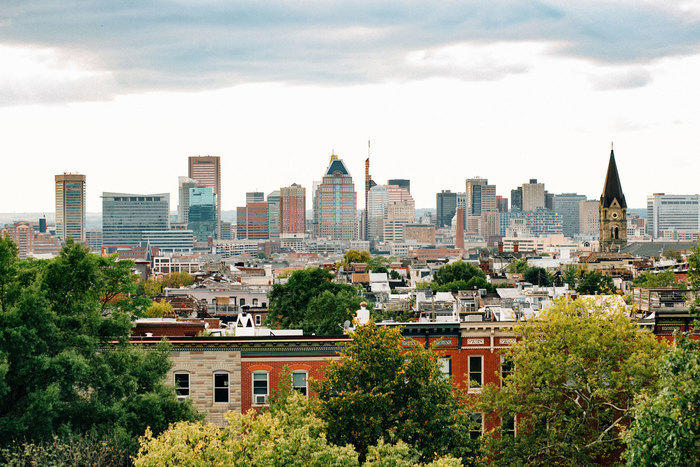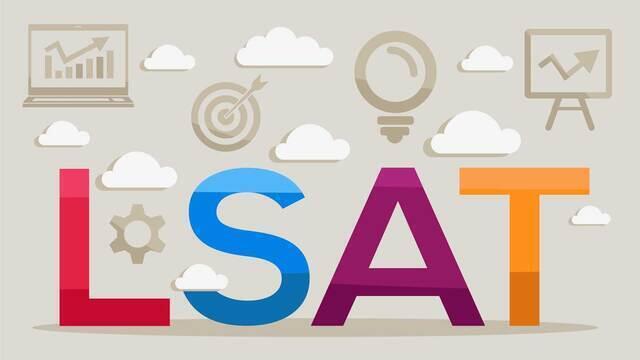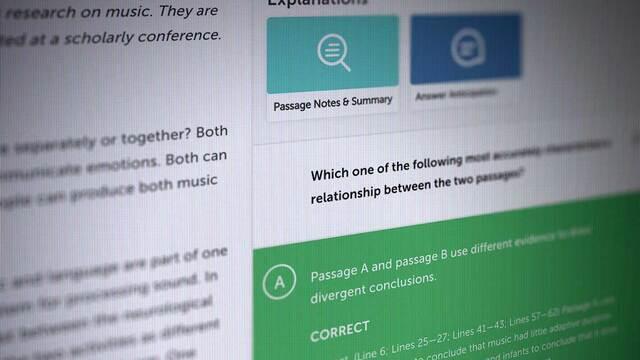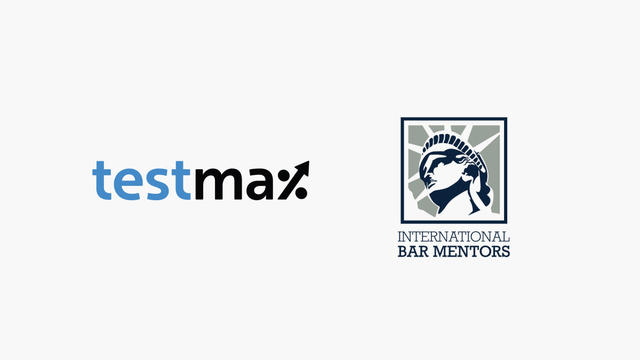University of Baltimore School of Law Overview
The University of Baltimore School of Law was established back in 1925 when the University of Baltimore was still a nonprofit, private institution. Its first-class, consisting of 38 students, graduated three years later in 1928. The school was originally founded to fill in the need for a part-time night school for the working class of Baltimore.
Skipping ahead to 1969, the school incorporated formal full-time classes held in the daytime. A year later in 1970, the school joined the Mount Vernon School of Law and the Eastern College to become a single entity. Today, its alumni include many powerful figures in American and international practice, including a third of Maryland’s incumbent judges and the bulk of Baltimore’s elected officials.
The University of Baltimore School of Law is a major conduit in the Maryland, Baltimore, and Washington, D.C., legal systems, keeping them stocked with quality graduates prepared for the future of the legal practice. The school features 13 modern and practical clinics in addition to many concentration areas in which it invests significant time, money, and expertise. These are:
- Medical law
- Intellectual property law and technology laws
- Family law
- Applied feminism
- Sports law
- International and comparative law
- Estate planning
- Business law
- Public and government service
- Taxation law
Located in the heart of Baltimore in the melting pot that is the Mount Vernon Cultural District, the University of Baltimore School of Law enables students to gain great access to many legal offices, government firms, nonprofits, and state and federal courts. Baltimore’s downtown and Inner Harbor are just a short drive away, and because the school sits next to a transit center, commuting has never been easier. Capitol Hill can easily be reached by riding the train for an hour from Penn Station.
The central portion of the University of Baltimore School of Law is the John and Frances Angelos Law Center, an ultra-modern structure that houses its moot courts, faculty offices, classrooms, cafeterias, and one of Baltimore’s most extensive law libraries. It also serves as a home for the school’s student organizations, mock trials, and competitive events.
Overall, the school offers two certificate programs and two LLM programs. The Graduate Tax Program was established in 1987 to educate students in estate planning with an additional master of science degree in taxation for degree-holders of accountancy.
The LLM LOTUS course was first offered in 2003 to familiarize attorneys who have a law degree from universities outside America with the United States’ legal system. A student can take the U.S. practice track, which covers the basic doctrines of U.S. law and allows alums to take the bar in New York, Washington, and Maryland, or the elective concentrations track, which focuses on selected areas of law.
Since its inception, the University of Baltimore School of Law has produced more than 13,000 graduates, the majority of whom practice all over the United States and abroad. The school is one of two law schools in Maryland.
University of Baltimore School of Law Rankings
When compared with law schools across America, the University of Baltimore School of Law ranks 126th. The ranking is based on the overall competitiveness of its students in multiple universally accepted indicators of success compiled by U.S. News and World Report.
Staying true to the spirit of its founding, the University of Baltimore School of Law ranks 40th in part-time law. It was the school’s original mission to provide working students with an accessible program that they could use to build their skills.
University of Baltimore School of Law Admissions
What is the University of Baltimore School of Law acceptance rate?
Before considering entrance to any law school, you should be mindful of the school’s areas of concentration. For example, a law school with a strong focus on intellectual property law will favor STEM degree holders, because IP law requires a knowledge of technological patents and scientific studies.
The University of Baltimore School of Law has a strong focus on estate planning, family law, and taxation. Students with interest in inheritance planning, insurance, and familial property matters will naturally gravitate to its doors. These are the students you’re going to be up against when you go through the qualifying process.
Many students who apply to the University of Baltimore School of Law are drawn by its very favorable ratio of faculty members to students. The school provides a great learning experience, ensuring that each student receives proper instruction and support. However, the school accepts only about 55% of its yearly applicants, and those who get in will enjoy relatively low tuition and living costs compared to other law schools in UB’s league.
Because the University of Baltimore School of Law has an international focus – including a program wholly modeled for lawyers who earned degrees outside the United States – international applicants have to compete with high TOEFL or IELTS scores. The higher, the better. Some scores may be sent to the Law School Admission Council when an applicant is utilizing the LLM Credential Assembly Service.
Compared to the tuition for most law schools in America, tuition at the University of Baltimore School of Law is one of the most competitive. It averages around $22,000 per for students who study full-time and is cut in half for patrons of the LLM programs in Washington, D.C.
The school’s ideal location, which is only one train ride away from Washington, D.C., and the capacity of its graduates to pass the bar exams of a variety of states make applications to this school very competitive.
| Applications | Offers | Matriculated | |
| Class of 2024 | 1,170 | 632 (54.02%) | 200 (17.1%) |
| 25% | Median | 75% | |
| GPA | 2.97 | 3.29 | 3.51 |
| LSAT | 149 | 152 | 155 |
| Applications | Offers | Matriculated | |
| Class of 2023 | 1,122 | 618 (55.08%) | 221 (19.69%) |
| 25% | Median | 75% | |
| GPA | 3.283 | 3.20 | 3.52 |
| LSAT | 151 | 155 | 158 |
University of Baltimore School of Law LSAT Percentiles
| 75th percentile | 149 |
| 50th percentile | 152 |
| 25th percentile | 155 |
Want to get into the University of Baltimore School of Law? Sign up for LSATMAX and get markedly improved test scores, or your money back.
2024 Entering Class Profile
| Number of Students | 779 |
| LSAT Score | 152 |
| Undergraduate GPA | 3.29 |
| % Women | 51.20% |
| % Students of Color | 15.7% |
What Is the Tuition for the University of Baltimore School of Law?
| In-State Resident | Non-Resident | |
| Full Time | $32,850 | $47,958 |
| Part Time | $24,518 | $33,878 |
What Are the Living Expenses at the University of Baltimore School of Law?
| On-Campus | $19,950 |
| Off-Campus | $19,950 |
What Are the Housing Options at the University of Baltimore School of Law?
| On-Campus | No |
| Off-Campus | Yes |
Bar Passages Rates at the University of Baltimore School of Law
| Reporting | 93.0% |
| First-Time Takers | 285 |
| University of Baltimore School of Law Average | 79.6% |
| Maryland State Average | 76.5% |
| National Average | 79.64% |
Application Deadlines
When will the University of Baltimore School of Law’s application materials be available?
Admission materials are available through the school’s website and lsac.org.
When does the University of Baltimore School of Law begin accepting applications?
The school starts accepting applications in March of each year.
How are applications to University of Baltimore School of Law submitted?
Applications to the University of Baltimore School of Law must be submitted through the Law School Admission Council’s website. New students must register for the LSAC Credential Assembly Service.
Does the University of Baltimore School of Law have an “early admission” or “early decision” process?
Students seeking a guaranteed spot at the University of Baltimore School of Law can close their applications to competing law schools and take advantage of the Early Entry Law Program, which will also allow them to forgo their senior year in undergrad.
How much is the application fee, and when is the deadline?
| Application Fee | $60 |
| Early Decision Deadline | March 1 |
| Regular Decision Deadline | July 31 |
Does the University of Baltimore School of Law grant interviews?
Law schools sometimes grant interviews for a more holistic view of prospective students and their chances of doing well, but the University of Baltimore does not grant admissions interviews in any context.
Employment After the University of Baltimore School of Law
| Median Salary Private Sector | $68,000 |
| Median Salary Public Sector | $47,000 |
Because of the University of Baltimore School of Law’s focus on the diversity of practices of law found in the school’s curriculum, graduates carry on that attitude in their choices of professions. Only around 38% of UB’s graduates go into private law firm practice. They mostly practice business law and estate planning, as those two are big concentrations of the university.
Around 21% of alumni go into the realm of business, balancing workers’ rights with business interests as they are hired to be clerks, corporate lawyers, and junior attorneys in many high-profile cases. Most of these companies are found in Maryland, but since the university equips graduates to practice in Tennessee, New York, and other states, many find employment all across America.
The University of Baltimore School of Law has a career development office that features its proprietary job board called UB Connect. This is just one of the innovative ways of helping students find secure, quality employment. On-campus interviews and job fairs also are conducted.
The career development office covers everything from assisting career education to linking alumni with a vast network of professional opportunities outside the university. The office also arranges mock interviews, resume writing, cover letter preparation, and other help to improve a student’s job search strategy.
Around 13% of University of Baltimore School of Law graduates find careers in the government. About 5% go into public interest, working for nonprofits, finding clerkships in the judicial system, and gaining steady work in charity organizations. Many of the graduates meet regularly outside their alma mater. That’s because 83% of all former students say they love Maryland so much that they’d rather work there than in any other state.
Only 7% of the most recent graduates chose to work in Washington, D.C., and 3% sought employment in Virginia. In all, 93% of 2019 graduates reported steady employment nine months after graduation, which is a very healthy stat for a place as competitive as Maryland.









